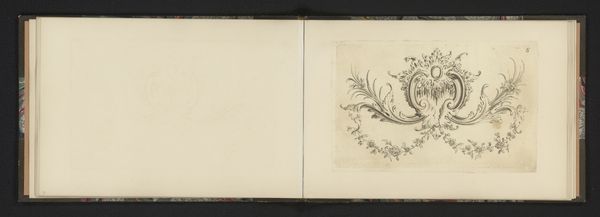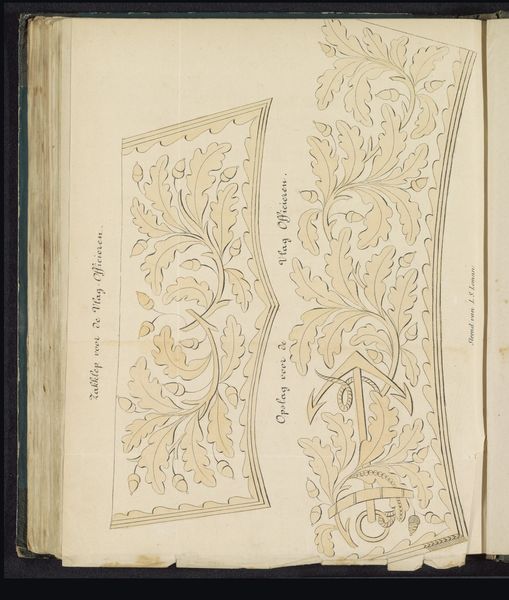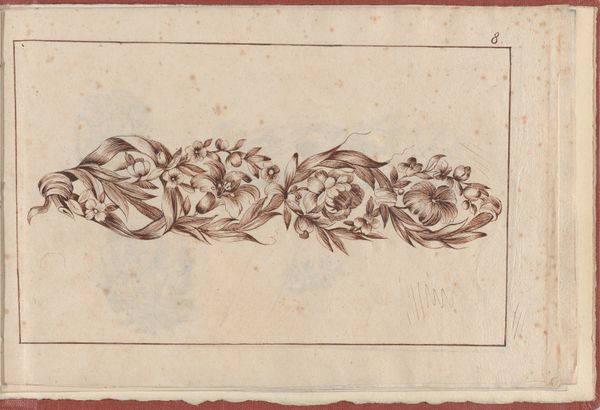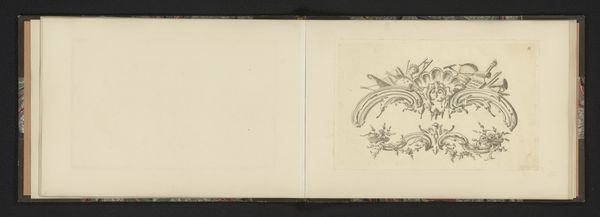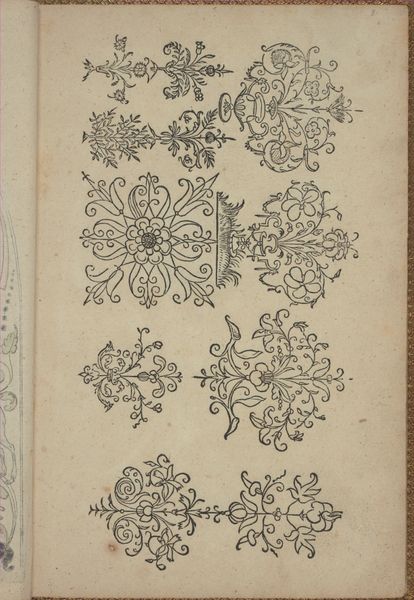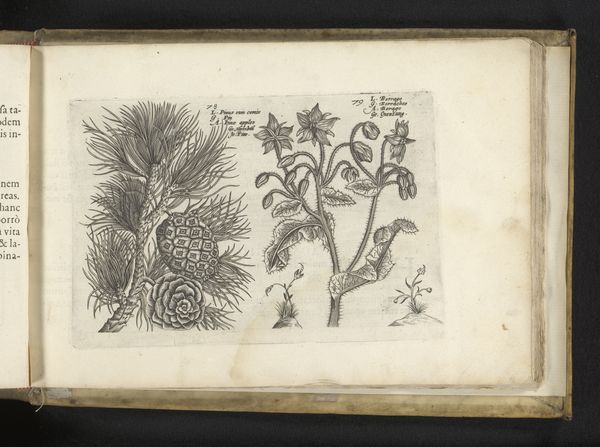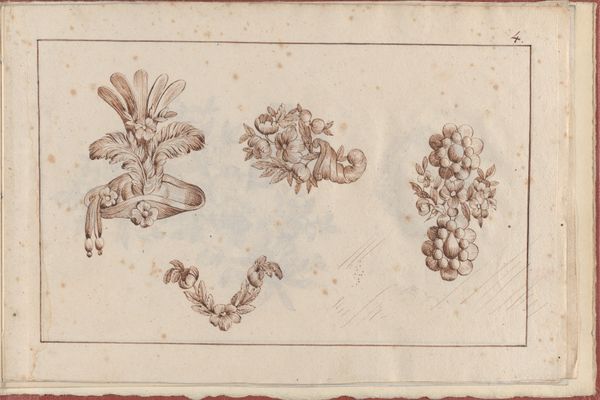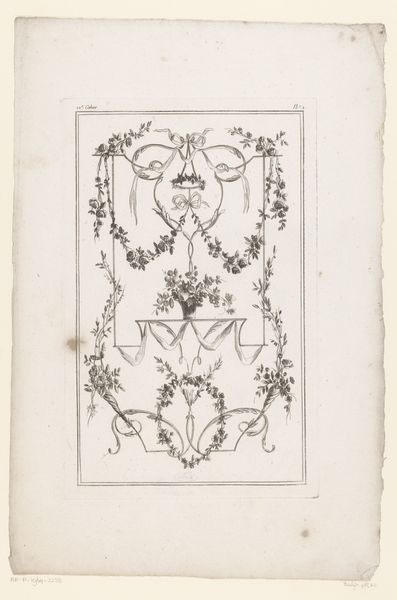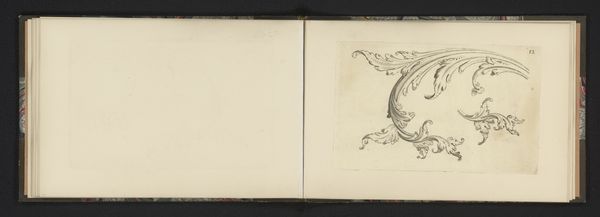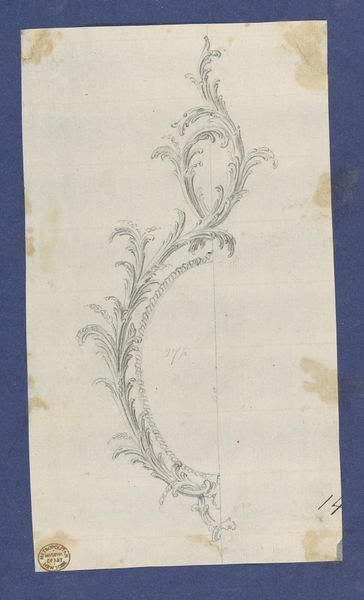
drawing, paper, watercolor
#
drawing
#
art-nouveau
#
paper
#
watercolor
#
coloured pencil
#
decorative-art
Copyright: Rijks Museum: Open Domain
Curator: Here we have "Ornament met Chinese roos," a decorative piece attributed to Johanna van de Kamer, likely created between 1890 and 1922. It appears to be executed in watercolor and coloured pencil on paper. Editor: My immediate thought is that the restricted palette makes this feel very planned. It's decorative, yes, but not spontaneous. You can almost feel the hand carefully applying each wash of color. Curator: Absolutely. Consider that as an iconographer, a rose often signifies love, beauty, and, in some contexts, even secrecy. The "Chinese roos"—which is actually a hibiscus— introduces an element of exoticism that was highly valued during the Art Nouveau period. It represented a connection to the East. Editor: And the way it's presented, clipped and isolated against that blank page… It feels less like a celebration of nature and more like a sample. This could have easily been part of a larger collection of design motifs meant to be deployed in textile or wallpaper manufacture. Curator: Precisely! The ornamental style echoes the aesthetic priorities of the era. We can track the symbolic value shifting from this single flower as an item plucked from a rose garden, to becoming a component within a decorative system. It reflects a deep historical continuity of taking natural objects and making them reproducible, culturally portable symbols. Editor: Right. Looking at the materials themselves, watercolor and pencil on paper point to relatively inexpensive methods for a design sample. If Van de Kamer meant for it as an end unto itself, she might have chosen a different support or perhaps oils for increased color richness. It signals a practicality geared towards widespread production. Curator: We are, after all, looking at design for living and lived space. Not something purely aesthetic divorced from its functionality. This ornamented rose shows a desire for art to permeate all strata of material life, and to spread to different locales. Editor: Seeing the design in this way gives a greater weight to its production, placing emphasis on dissemination of design in manufactured objects. Curator: For me, tracing the life of the Chinese rose’s image highlights art’s ongoing capacity to mean new things. Editor: I agree. By paying close attention to its method, "Ornament met Chinese roos" demonstrates the material processes that help meanings propagate.
Comments
No comments
Be the first to comment and join the conversation on the ultimate creative platform.
